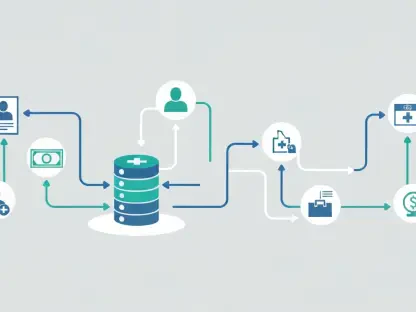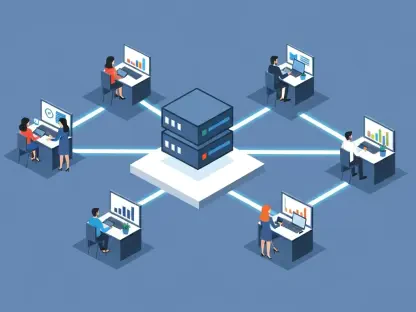In the rapidly evolving digital landscape, secure remote support has emerged as a critical enabler for successful digital transformation. In a world where hybrid work environments are becoming the norm, the necessity for robust and secure IT support systems has never been more apparent. As organizations strive to integrate digital solutions to optimize operations, enhance employee experience, and bolster cybersecurity—a secure remote support framework is indispensable. This article delves into the essential pillars of digital transformation, illustrating the integral role of secure remote support in driving these initiatives forward.
Importance of Cloud-First Infrastructure
Scalability, Cost Efficiency, and Flexibility
In the sphere of digital transformation, a cloud-first infrastructure is foundational. Organizations are increasingly adopting cloud platforms to leverage their scalability, cost efficiency, and flexibility—all of which are pivotal in maintaining competitive advantages in a digital economy. Cloud platforms facilitate real-time collaboration across various geographical locations, empowering teams to innovate and respond swiftly to market demands. However, the ease of access provided by these platforms introduces a set of challenges, particularly regarding data security and regulatory compliance.
Secure remote support systems hosted on these cloud platforms can effectively address these challenges. They provide comprehensive IT assistance across multiple locations without compromising data integrity, employing tools such as secure access controls, activity logging, and encrypted sessions. Such measures ensure that sensitive information remains protected while maintaining seamless connectivity and operational continuity.
Real-Time Collaboration and Data Protection
The dynamic nature of cloud computing necessitates stringent data protection protocols to guard against breaches and unauthorized access. This is where secure remote support plays a crucial role. By employing advanced security features such as multi-factor authentication, user consent prompts, and session timeouts, remote support systems mitigate risks associated with data access and management. These features not only safeguard against potential cyber threats but also ensure compliance with various regulatory standards, which is increasingly important in today’s globalized business environment.
Moreover, the integration of secure remote support into cloud infrastructure underpins real-time collaboration efforts. Teams can effortlessly share information, tools, and resources across secure channels, fostering a collaborative culture that drives innovation. This synergy between secure remote support and cloud technology is essential in transforming how organizations operate in the digital age.
Enhancing Employee Experience and Productivity
Seamless Interaction with Technology
A cornerstone of any digital transformation initiative is the enhancement of employee experience and productivity. Today’s workforce expects seamless interaction with technology, immediate assistance for system issues, and intuitive tools that enable them to perform effectively. Traditional help desks and support models are often inadequate in addressing the needs of a distributed work environment, where employees are spread across different locations.
Modern remote support solutions are designed to bridge this gap. They offer instant, no-download access to support sessions, ensuring that employees can quickly connect with IT specialists regardless of their location. Features such as cross-platform compatibility, integrated chat, video, and screen sharing functionalities further streamline the support process. These capabilities contribute to a frictionless experience, allowing employees to resolve issues promptly and return to their tasks without significant downtime.
Building Trust through Security Features
The security features integrated within remote support solutions are pivotal in building trust among employees. User consent prompts, role-based access controls, and comprehensive audit trails ensure that support sessions are conducted transparently and securely. These measures reassure employees that their data and systems are protected during remote support interactions, fostering confidence in the organization’s ability to provide secure and efficient assistance.
By facilitating secure and instant access to support, organizations not only enhance productivity but also elevate the overall employee experience. Employees are empowered to focus on their core responsibilities, knowing that reliable and secure support is readily available whenever needed. This positive impact on morale and efficiency underscores the importance of secure remote support in a successful digital transformation strategy.
Strengthening Cybersecurity and Compliance
Mitigating Risks of Ransomware and Phishing Attacks
The surge in cyber threats such as ransomware and phishing attacks underscores the critical need for robust cybersecurity measures within digital transformation efforts. Insecure remote support management represents a significant vulnerability, potentially exposing sensitive information and granting unauthorized access to systems. To counteract these risks, secure remote support tools incorporate advanced security protocols, including end-to-end encryption, role-based access control, and multi-factor authentication.
End-to-end encryption ensures that all data transmitted during remote support sessions is protected from interception or unauthorized access. Role-based access control restricts support capabilities to authorized personnel only, preventing misuse or exploitation of critical system functions. Multi-factor authentication adds an extra layer of security, verifying user identities through multiple criteria before granting access to support tools. These collective measures contribute to a fortified cybersecurity posture, essential for safeguarding digital assets.
Ensuring Compliance with Regulatory Standards
Regulatory compliance is paramount in the digital age, with organizations required to adhere to stringent guidelines concerning data protection and privacy. Secure remote support systems help achieve compliance by implementing features such as session logs and activity tracking. These functionalities provide a detailed audit trail of support interactions, enabling organizations to monitor and verify adherence to compliance standards.
The ability to track and record support sessions ensures transparency and accountability, which are critical for meeting regulatory requirements. By incorporating secure remote support into their cybersecurity framework, organizations can proactively manage compliance risks and maintain the integrity of their operations. This alignment with regulatory standards not only protects the organization from legal repercussions but also reinforces customer trust and confidence.
Bridging Digital Infrastructure and Human Experience
Empowering Hybrid Workforces
Digital transformation is not solely about technological advancements; it is equally about enhancing human experience and empowering a hybrid workforce to thrive in a dynamic environment. Secure remote support plays a crucial role in bridging the gap between digital infrastructure and human experience, ensuring that employees can navigate the complexities of modern work settings efficiently.
Hybrid work models, which combine remote and in-office work, demand flexible and reliable support systems. Secure remote support solutions address this need by offering versatile access to IT assistance across various devices and locations. Employees can receive timely support without being constrained by geographical boundaries, fostering a work culture that values convenience and adaptability.
Accelerating IT Service Delivery
By utilizing secure remote support, IT teams can deliver faster, more efficient services tailored to the needs of a hybrid workforce. The ability to initiate instant support sessions, coupled with advanced diagnostic tools, enables IT specialists to resolve issues promptly and effectively. Integrated chat and video functionalities facilitate clear communication, ensuring that support is provided comprehensively and accurately.
This acceleration in IT service delivery is vital for maintaining operational continuity and employee satisfaction. When employees can rely on swift and secure support, they are better equipped to perform their duties and contribute to the organization’s goals. Secure remote support thus acts as a pivotal enabler of digital transformation, driving both technological innovation and human productivity.
Holistic Approach to Digital Transformation
Integrating Key Elements
A successful digital transformation strategy requires a holistic approach that integrates various elements to create a robust and adaptable organization. Secure remote support is a key component in this integration, offering solutions that enhance cloud infrastructure, improve employee experience and productivity, and strengthen cybersecurity and compliance measures. The consolidation of secure remote support into these pillars ensures a stable foundation for transforming business operations.
By embedding secure remote support within cloud platforms, organizations can maximize the benefits of scalability, cost efficiency, and real-time collaboration while safeguarding data integrity. This integration facilitates seamless interaction between technology and personnel, driving innovation and efficiency. Additionally, remote support solutions enhance employee experience by providing instant and secure access to IT assistance, fostering a positive work environment.
Adapting to an Evolving Digital Landscape
The evolving digital landscape demands that organizations remain agile and responsive to emerging trends and challenges. Secure remote support offers the flexibility and security needed to adapt to these changes, ensuring that digital transformation efforts remain effective and relevant. By continuously enhancing remote support capabilities, organizations can proactively address new cybersecurity threats, regulatory requirements, and workforce needs.
This adaptability is crucial for maintaining a competitive edge in the digital economy. Secure remote support empowers organizations to evolve alongside technological advancements and market dynamics, positioning them for sustained success. As digital transformation continues to shape the future of work and business, the role of secure remote support will only grow in significance.
Future Perspectives and Practical Steps
Leveraging Technology for Continued Transformation
In conclusion, secure remote support stands out as a pivotal element in the ongoing journey of digital transformation. Moving forward, organizations need to leverage evolving remote support technologies to ensure continued progress. Focusing on scalability, enhanced security, and real-time collaboration will help maximize the benefits of a cloud-first infrastructure. With secure remote support systems, entities can enhance operational performance while ensuring robust data protection and compliance with industry standards.
Developing Comprehensive Strategies
In today’s quickly changing digital world, secure remote support has become a crucial component of successful digital transformation. As hybrid work environments become more common, the need for strong and secure IT support systems is more evident than ever. Organizations are working hard to integrate digital solutions that help optimize operations, improve employee experiences, and enhance cybersecurity. In such efforts, a secure remote support framework is essential. This article explores the key pillars of digital transformation, highlighting the vital role that secure remote support plays in advancing these initiatives.
As companies adopt new technologies to stay competitive, they must ensure their IT support systems can handle the growing complexities of remote work setups. Secure remote support not only addresses technical issues quickly but also safeguards sensitive data from potential cyber threats. By investing in robust remote support solutions, organizations can create a seamless digital experience for employees, ultimately driving productivity and innovation.









